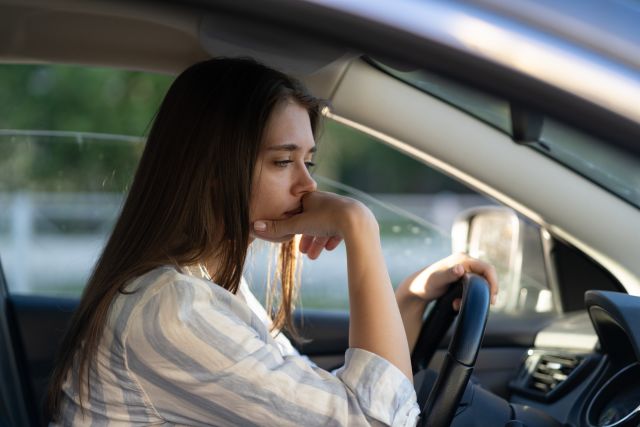Updated on April 7, 2025.
If you’re in the car and can’t remember the last few turns you made, you might want to pull over. It could be a sign that you're too drowsy to drive.
Driving while drowsy is common and dangerous. It puts you and those around you at serious risk of injury or death. About 17.6 percent of fatal car crashes between 2017 and 2021 involved people who felt sleepy or dozed off while driving, according to a 2024 report from the American Automobile Association (AAA) Foundation for Traffic Safety. Those accidents resulted in almost 30,000 deaths.
To reduce the chances of this preventable health hazard, it’s important to understand your risk for driving drowsy or falling asleep at the wheel, and to learn the signs of sleep deprivation.
Sleep and the road
Healthy adults should get between seven and nine hours of sleep each night. Sleep deprivation increases the odds of an accident. In another AAA Foundation for Traffic Safety report, drivers who got between five and six hours of sleep at night were nearly twice as likely to crash than those who slept at least seven hours. Drivers who got less than four hours of sleep were 11.5 times more likely to crash.
This increased accident risk is due in part to impaired decision-making skills, reaction time, and attentiveness. In fact, driving when you’re too tired is often compared to driving while intoxicated.
If you drive after being awake for 18 hours, reaction time and hand-eye coordination are about the same as they would be if your blood alcohol content (BAC) was 0.05 percent, according to the Centers for Disease Control and Prevention (CDC). This is the equivalent of a 155-pound woman drinking almost two glasses of wine and getting behind the wheel. If you’ve been awake for 24 hours, it would be comparable to driving with a BAC of 0.1 percent. That’s equal to nearly four glasses of wine for a 155-pound woman—and over the legal BAC limit in all states.
Don’t power through
Researchers suspect that many motorists simply don't recognize the signs that they're too drowsy to safely drive. Or worse, many drivers simply assume they can rise above their drowsiness and force themselves to stay awake on road. But just feeling sleepy is also dangerous, research shows. Like being sleep deprived, it's associated with an increase in crash-related critical injuries or death due to falling asleep at the wheel.
Even though you don’t feel exhausted, be aware of symptoms like tired eyes, constant yawning, a foggy brain, and a nodding head. These are clear signs that you're too sleepy to drive safely. There are also a few other, less obvious, clues you may be at risk for falling asleep at the wheel. These include:
- Frequent squinting and blinking
- Missing turns or exits along your route
- Having difficulty picturing previous turns or stretches of road
- Hitting the rumble strip on the side of the road
- Daydreaming or restlessness
Additional risk factors
There are additional factors closely linked to drowsy-driving crashes, including lack of light and stimulus. Drowsy-driving accidents are most likely to occur in the late afternoon or between the hours of midnight and 6 a.m., according to the National Highway Traffic Safety Administration (NHTSA). That’s when your circadian rhythm (natural body clock) dips, leading to sleepiness. People are more likely to crash at night when they are in the car alone and when driving on rural roads and highways, as well.
Certain groups of people are also at higher risk of driving drowsy. They include:
- Teenagers, young adults, and new drivers
- People who have slept less than six hours the night before
- Shift workers
- Commercial drivers, such as bus and truck drivers
- New parents
- People with a sleep disorder
- People who have consumed any alcohol
- People who take medications that can make you drowsy
Don’t take the chance
If you have symptoms of fatigue while driving, don’t count on an energy drink or coffee to keep you awake. These tactics may give you a short-term boost in alertness but can also leave you susceptible to what are known as “micro sleeps”—where you nod off for just a few seconds—according to the NHTSA.
While you may not notice a quick loss of consciousness, a few seconds are enough to cause an accident, particularly if you’re highway driving. If you must complete a drive while sleepy, pull over, park your car, and grab a 20-minute catnap in a safe place. Better still, find a motel and get a full night’s sleep before continuing your trip.







